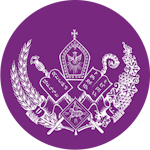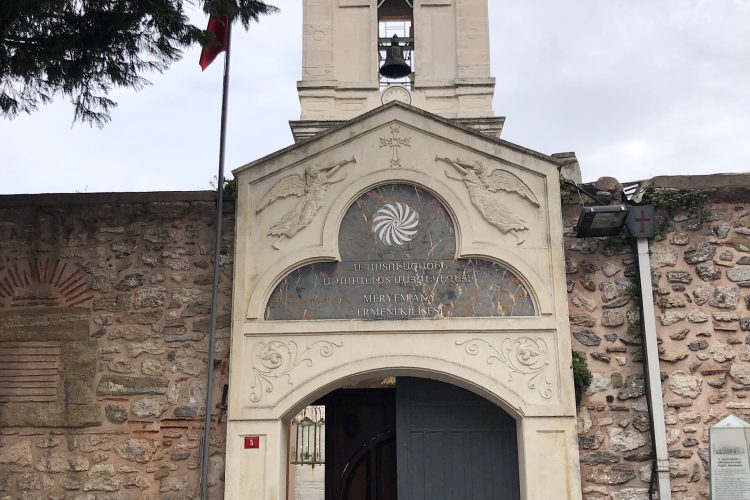– SURP VORTVOTS VORODMAN CHURCH
– SURP HARUTYUN CHAPEL
– SURP HAÇ CHURCH (BEZCIYAN HALL)
– SURP HOVHANNES BAPTISMAL CHAPEL
– SURP TOROS AYAZMA CHAPEL
Originally, it was a Byzantine Church. This church is the largest church in Istanbul. Finally, in 1641, it became the Patriarchal Cathedral Church of Istanbul Armenians. It burned down completely in 1645 and was rebuilt the same year during the period of Patriarch Tavit Areveltzi and through the efforts of Priest Boghos from Divrik. The fire of 1718 destroyed the church and the entire patriarchate. A year later, the church was rebuilt with the efforts of Jerusalem Patriarch Krikor Shghtayagir, Istanbul Patriarch Hovhannes Golod, and the imperial architects Hacı Seğpos, Hacı Melidon Araboğlu, and Sarkis Kalfa. The fire of 1762 caused damage again, but Patriarch Hagop Nalyan quickly restored the building. Later, Patriarch Zakarya surrounded the church with stone walls and took precautions against fire by building a pool and a water pump.
The church was repaired during the period of Edirne-born Patriarch Boghos in 1819 under the supervision of Harutyun Amira Bezciyan (Kazaz Artin).
Due to a fire that broke out in 1826, the church and the patriarchate were completely destroyed. Harutyun Amira Bezciyan, with the edict of Sultan Mahmud II, rebuilt the church with stone following the plans prepared by architect Kirkor Amira Balyan and Garabet Devletyan, and it was opened for worship in 1828. In 1834, the Bezciyan School was established. In the basement of the Surp Harutyun Chapel, a holy spring (ayazma) dedicated to Surp Teotoros was constructed. The body of Harutyun Amira Bezciyan was buried in the Surp Harutyun Chapel. Later, a bronze bust of him was made by the famous sculptor Erol Sarafyan and placed beside his grave.
The Patriarchal Cathedral Church underwent a partial restoration in 1847. In 1870, with the efforts of Patriarch Mıgırdiç Hrimyan of Van (Hayrig), a stone bell tower was constructed at the western entrance. Although this tower was damaged in the 1999 Marmara Earthquake, it is still in use after repairs. The last renovation after 1902 occurred in 1985.
Starting from the late 17th century and continuing through the 18th and 19th centuries, a printing press was established in the courtyard of the Patriarchal Church where significant books were published.
The current main altar and side altars of the church were built by Sarkis Kiçik in 2006, under the instruction of Patriarch Mesrob II and with the financial support of benefactors, inspired by the altars of the Surp Krikor Lusavoriç Church in Kayseri.
Surp Vortvots Vorodman Church Surp Vortvots Vorodman Church, also known as Patriarch Mesrob II Cultural Center, is one of the four churches under the supervision of the Kumkapı Meryem Ana Armenian Church Foundation Board of Trustees.
During World War I, Surp Vortvots Vorodman Church was used as a warehouse, and in the 1940s, it served as a chain and rope factory. Following the earthquakes in Varto in 1966 and Lice in 1975, the church building provided shelter for Armenian earthquake victims. Over the years, due to lack of maintenance, the building gradually fell into disrepair.
Under the administration of the Kumkapı Meryem Ana Armenian Church Foundation Board of Trustees, elected on November 16, 2008, the restoration of Surp Vortvots Vorodman Church was carried out within the scope of the 2010 European Capital of Culture program. It was officially reopened with religious and formal ceremonies on December 28, 2011. It was His Holiness Patriarch Mesrob II who first brought up the renovation of this building and desired it to become a cultural center. Therefore, Surp Vortvots Vorodman Church is also named Patriarch Mesrob II Cultural Center in his honor.
While the church continues to serve its religious function, it also holds a special place in Istanbul’s cultural and artistic life as a venue for concerts, exhibitions, and various cultural events due to its historical and architectural structure.
Those buried in the church’s courtyard:

